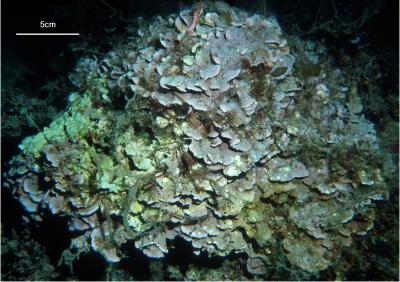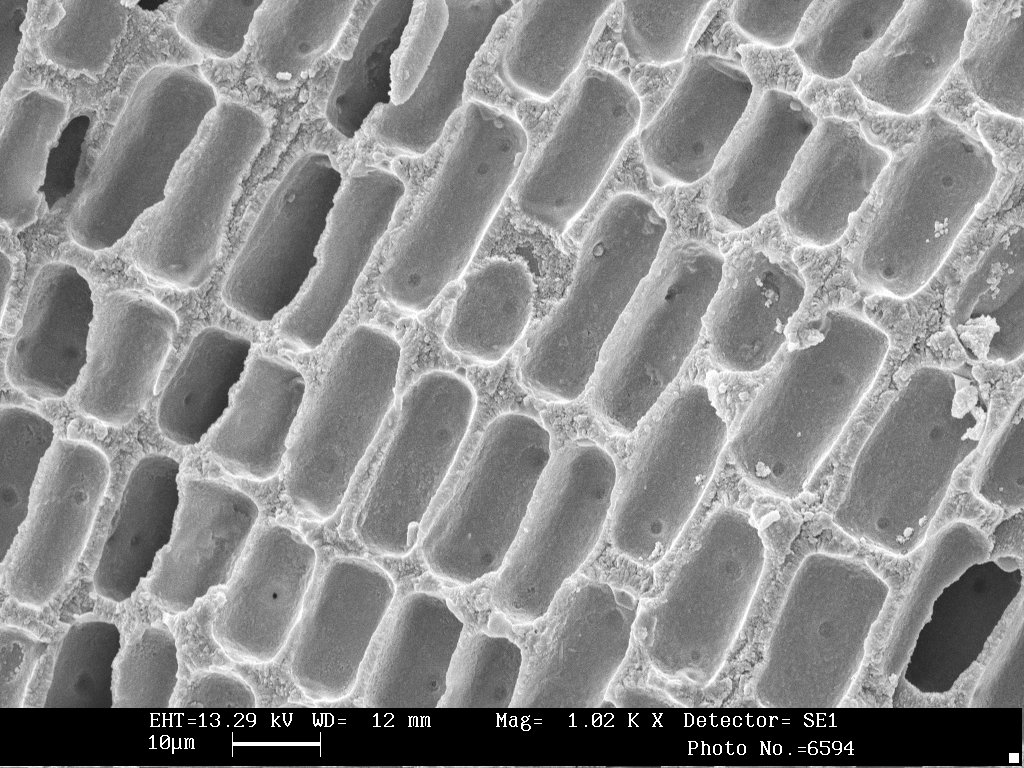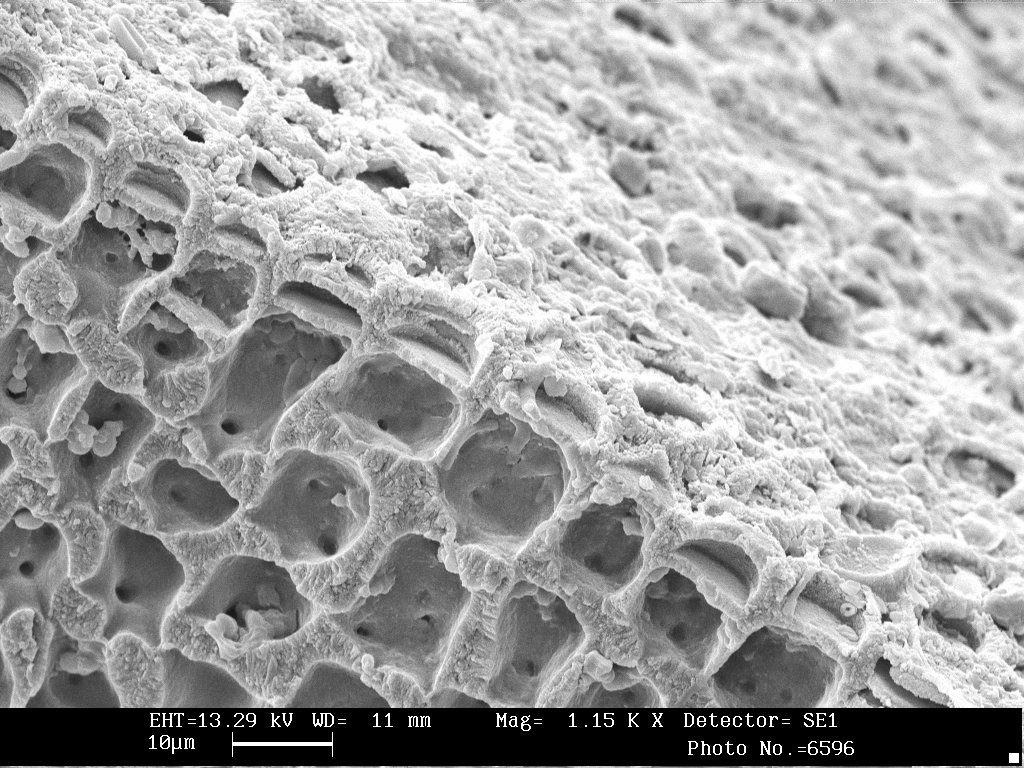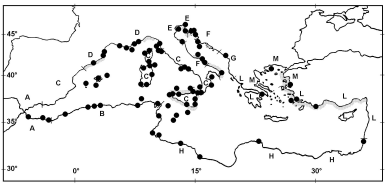BACK
VEGETATIVE FEATURES
REPRODUCTIVE FEATURES
ECOLOGY
PHOTO GALLERY  |
|
| LITHOPHYLLOIDEAE | 21_LTP_STC LITHOPHYLLUM |
| Lithophyllum stictaeforme (Areshoug in J. Agardh) Hauck (1878) p.292. | |
 |
|
|
Synonyms: (basyonim) Melobesia stictaeformis Areschoug (1852) J. Agardh p. 517; Lithophyllum expansum f. stictaeformis Foslie (1901) p. 18; Melobesia frondosa Dufour (1861) p. 39; Lithophyllum frondosum (Dufour) Furnari, Cormaci & Alongi (1996) p. 120. |
|
|
Thallus habit: encrusting with smooth, flat or mamillate surface, bearing semicircular adventitious lamellae, even overlapping (A); often weakly adherent or, according to some authors, unattached as rhodolith. Sometimes forming sleeves around other algae. Edge growing thin (A). Size: 2-5cm in diameter (sometimes up to 15-30cm); central part of thallus up to 2mm thick. Colour of living specimen: pale pink –violet. Colour of dried specimen: grey mauve-whitish.
Basal crust: multistratose thallus. Basal filaments: unilayered, dense structure, straight cells (not palisade cells); cells (12) 15-20 (22)µm long x (15) 18-22 (25)µm in diameter. Erect filaments: multilayered, loose (B); cells with rounded lateral walls: (15) 20-30 (45)µm long x (5) 10-18µm in diameter. Epithallial cells: 1-2 (3) (C); cells 4-8µm long x 10-16µm in diameter. Cell connections: secondary pit-connections. |
 A A
 B B
 C C
|
REPRODUCTIVE FEATURES 
Vegetative reproduction by thallus fragmentation. Conceptacles: numerous (except margin), slightly raised with not well defined periphery. Gametangial conceptacles: spermatangial (100) 140-160µm in diameter x 25-60µm high; carpogonial conceptacles frequent, slightly protruding, with flat roof: (169) 300-385µm in diameter x (65) 85-115 (125)µm high; Tetra/bisporangial conceptacles: uniporate, spread, flat or slightly raised (D), with central columella: (225) 320-410 (445)µm in diameter x (65) 90-125 (160)µm high. Bisporangial conceptacles unknown. Phenology: from May to September. |
 D D
|
ECOLOGICAL FEATURES


Habitat: species that competes for the formation of “encorbellements”, always submerged and frequent in rocky breaks, crevices more rarely in pools, occurring in environments with dim light and strong currents. Common also in deep sites, in coralligenous environment with Neogoniolithon mamillosum, or on Posidonia rizhomes. Bathymetric distribution: sublittoral to lower sublittoral, from surface to 15-30 (40)m deep. Geographic distribution (Babbini & Bressan, 1997): Alboran Sea (A): Morocco; Western Mediterranean Sea (African shores) (B): Tunisia, Algeria; Middle Western Mediterranean Sea (C): Spain, France, Italy; North Western Mediterranean Sea (D): Spain, France, Italy; North Adriatic Sea (E): Italy, Slovenia, Croatia; Middle Adriatic Sea (F): Italy, Croatia; South Adriatic Sea (G): Italy, Croatia, Albania; South Eastern Mediterranean Sea (H): Italy, Malta, Tunisia, Libya, Israel; Middle Eastern Mediterranean Sea (L): Italy, Greece, Turkey, Syria; North Eastern Mediterranean Sea (M): Greece. www.AlgaeBase.org Lithophyllum stictaeforme (Areshoug in J. Agardh) Hauck |
|